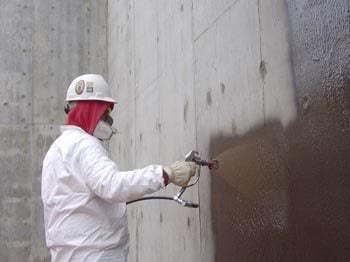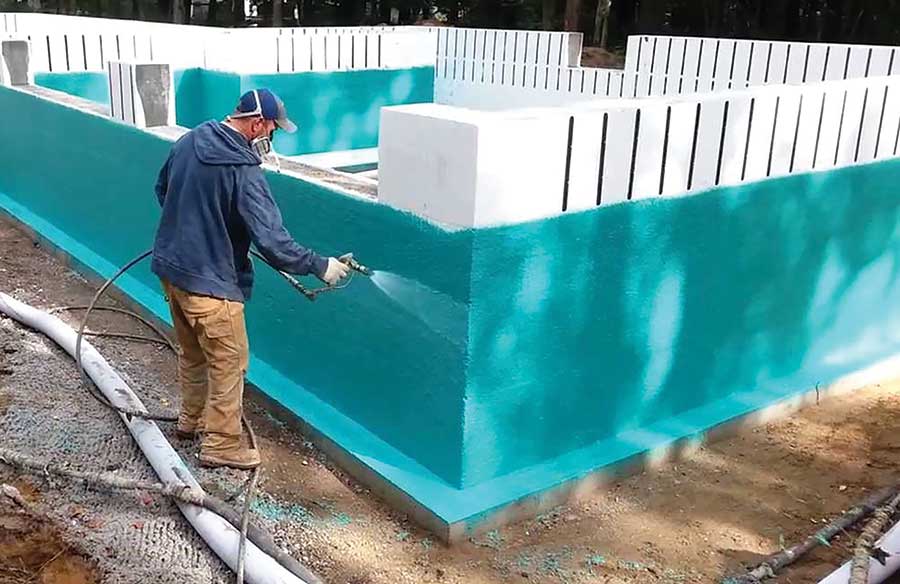How Landscape drainage Omaha Protects Your Foundation from Seasonal Flooding
Sorts of Waterproofing: Checking Out the Numerous Techniques and Their Applications
Waterproofing is an important aspect of building and maintenance. It protects structures from the detrimental effects of water damage. There are numerous methods available, each with its one-of-a-kind applications and benefits. From membrane systems to cementitious remedies, recognizing these options is vital for effective implementation. The selection of waterproofing approach can greatly influence longevity and longevity. Discovering these different strategies reveals their distinctive advantages and prospective difficulties, triggering further consideration of ideal solutions.
Membrane Waterproofing Equipments
Membrane layer waterproofing systems offer as an important obstacle against water intrusion in various frameworks. These systems commonly are composed of slim sheets made from materials like rubber, polycarbonate, or asphalt, which are put on surface areas to avoid dampness infiltration. They can be set up over or listed below grade and are specifically efficient in areas susceptible to high water exposure, such as cellars, roofing systems, and foundations.The setup procedure entails cleansing the substratum, using adhesives or guides, and exactly suitable the membrane to guarantee total insurance coverage. Membrane layer systems can be either totally adhered, mechanically attached, or laid loose, depending upon the details requirements of the task. They offer durability and versatility, accommodating architectural motions without jeopardizing their waterproofing capabilities. Moreover, these systems can be strengthened with added layers for improved defense. Ultimately, membrane waterproofing systems are crucial for protecting frameworks against water damage and keeping long-lasting integrity.
Liquid-Applied Waterproofing Coatings
Liquid-applied waterproofing finishings supply a flexible service for shielding surface areas from water seepage - Basement waterproofing Omaha. These layers contain fluid products that, when used, develop a smooth, flexible membrane. Their adaptability permits for application on numerous substrates, including concrete, metal, and timber. The coatings can be made use of in varied atmospheres, from household to commercial setups, making them suitable for roof coverings, foundations, and below-grade structures.One significant advantage of liquid-applied coverings is their capacity to comply with irregular shapes and penetrate splits, developing a durable barrier against wetness. They often show excellent bond homes and resistance to UV radiation, making sure longevity and toughness. Additionally, the application procedure is normally simple, permitting quick installment and lowered labor costs. This approach likewise minimizes the threat of water merging, as the continual layer effectively directs water far from at risk areas. Overall, liquid-applied waterproofing layers are an efficient choice for detailed water defense
Cementitious Waterproofing Solutions

Cementitious waterproofing solutions use a durable choice for frameworks requiring dependable moisture protection. These systems largely use a blend of cement, sand, and chemical additives to create a water resistant obstacle. They are often related to surfaces such as concrete wall surfaces, structures, and floors, providing a durable, lasting protection versus water intrusion.One of the crucial advantages of cementitious waterproofing is its convenience of application; it can be applied utilizing a brush, roller, or spray, making it ideal for various project dimensions. Furthermore, this method is compatible with lots of surface areas and can often be utilized in conjunction with other waterproofing techniques.Cementitious remedies are specifically efficient in settings where water exposure is an issue, such as cellars or below-grade frameworks. Their outstanding attachment homes ensure that they bond well with substratums, supplying a strong and impermeable layer versus moisture infiltration.
Bentonite Waterproofing
Bentonite waterproofing is a highly efficient method that makes use of sodium bentonite clay to produce an all-natural barrier against water. This strategy makes use of the distinct buildings of bentonite, which broadens upon contact with water, securing any kind of potential leaks and protecting against dampness seepage. It is frequently used in different applications, consisting of structure walls, tunnels, and keeping walls, where water resistance is essential.Bentonite can be used in a number of forms, such as panels or blankets, supplying versatility in setup. Its capability to self-seal makes it an eye-catching option for areas based on moving soil or ever-changing water degrees. In addition, bentonite waterproofing is environmentally friendly, as it is a natural product that does not introduce damaging chemicals into the environments.
Drain and Exterior Waterproofing Systems
Effective waterproofing commonly includes a mix of strategies, consisting of drainage and exterior systems. Water drainage systems, such as French drains pipes and sump pumps, are created to reroute water away from structures, decreasing hydrostatic pressure versus structures. best waterproofing These systems are necessary in avoiding water buildup that can result in structural damages and mold and mildew growth.External waterproofing, on the other hand, involves applying safety obstacles to the building's outside. Techniques such as the setup of water resistant membrane layers, finishings, or sealers can help prevent water infiltration. This technique not only secures the structure but additionally enhances the total sturdiness of the structure.Together, drainage and exterior waterproofing systems form a thorough option to take care of water successfully. By executing these techniques, building proprietors can secure their investments against the harmful effects of dampness, ensuring lasting security and security for their structures.
Often Asked Concerns
Just how Do I Select the Right Waterproofing Approach for My Project?
Selecting the ideal waterproofing approach relies on factors such as task type, ecological problems, spending plan, and desired long life. Reviewing these elements enables educated decisions customized to specific requirements and demands.

Can Waterproofing Be Applied in Cold Weather Condition Conditions?
Waterproofing can be applied in cold weather problems, but it needs specific products and strategies. Cold temperature levels might influence healing times and More hints adhesion, necessitating mindful option of products created for low-temperature application.
What Are the Common Signs of Waterproofing Failing?
Usual signs of waterproofing failing consist of noticeable water stains, peeling off paint, moist smells, mold and mildew growth, and fractures in walls or foundations. Sump pump installation & replacement Omaha. These indicators suggest that moisture is penetrating the obstacle, jeopardizing its performance
How Much Time Does Waterproofing Last Prior To Needing Maintenance?
The longevity of waterproofing varies, generally lasting between 5 to ten years. Elements such as material top quality, environmental problems, and maintenance techniques affect its durability, demanding regular examinations to guarantee efficient protection versus water invasion.
Are There Eco-Friendly Waterproofing Options Available?
The inquiry of environment-friendly waterproofing options exposes a growing waterproofing systems rate of interest in sustainable products (Landscape drainage Omaha). Numerous natural materials, such as plant-based sealants and recycled products, supply effective options while lessening ecological influence, attracting ecologically mindful customers